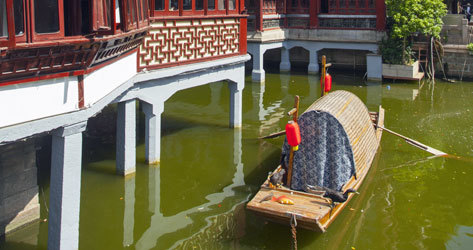- SPAIN: The best natural pools on our coast
- EXPERIENCE: Trekking to Petra: an Indiana Jones adventure for almost everyone
Eleven years ago, in 2008, Beijing wanted to claim its modernity to the world. The country faced its first Olympic Games , the third in history in the Asian continent, and put all the meat on the grill to make things go well. Cranes and workers took the city. Whole apples of hutongs - neighborhoods erected by the Mongol dynasty of the Yuan in the 13th century - were demolished to accommodate luxury residences, shopping centers and offices embedded in skyscrapers.
It was a very controversial decision that pushed the Chinese government to declare, later, the special protection of other historic areas in the city. But what was done was done. The financial district of Cháoyáng was the point of the map where the great icons of the Olympic Beijing were raised. The National Stadium or Bird's Nest , conceived by the Swiss studio Herzog & de Meuron (authors of the Forum Building in Barcelona or the Tate Modern in London), remains a national pride. And the National Aquatic Center or Water Cube , also signed by foreign architects, in this case the PTW Australians.
COMMUNITY OF ARTISTS
The construction of the Olympic Basketball Gymnasium was planned in this new urban plan, which was signed by a consortium of Chinese companies. “It has capacity for 18,000 people and this summer it will be one of the venues of the Basketball World Cup,” explains local guide Yi Jie. And not only that, in the Beijing 2022 Winter Olympics, women's ice hockey games will be played here. Beijing will be the first city in history to hold a summer and winter Olympic Games, ”he proudly says.
A little further south, Cháoyáng hosts another construction that would change the skyline of Beijing at the dawn of the Olympic tide and today is an icon: the amazing building of the Chinese television CCTV, designed by Rem Koolhaas and Ole Scheeren. Around him, year after year, many and varied forms of architecture made to impress have been erected.
There are embassies, bank offices, co-working spaces, shopping centers and even an immense 250-meter long LED screen very similar to that of Freemont Street in Las Vegas. But in the neighborhood there is also a vibrant and alternative artistic community. Although the unstoppable price increase has caused some authors to have left here, the 798 Art Zone , considered a sub-district in itself within Cháoyáng, remains a benchmark of contemporary art internationally.
They define themselves as "the largest and most influential artistic district of China." The workshops, galleries and design studios fit into a dismantled set of military factories of Soviet architecture of the 1950s. It is a very hipster complex that they have been through since the famous Ai Wei Wei, who made his first individual exhibition here in Chinese territory in 2015; to the prolific Yue Minjun , known for his self-portraits laughing out loud. The Beijing International Art Biennale (BIAB), an event that was born - like so many other things - is also celebrated in Cháoyáng, with the appointment of Beijing as the Olympic capital.
HEIGHT BUILDINGS
In addition to Beijing and the southern Canton, Shenzhen or Wuhan among others, the cosmopolitan Shanghai also boasts being among the venues of the Basketball World Cup. Its temple will be the Mercedes-Benz Arena, another stadium of futuristic lines - its design was inspired by a flying saucer - which was built for the Shanghai Universal Exhibition in 2010. It was located in the very powerful Pudong neighborhood, the Wall Street of China (surely the Party would hate this comparison), the financial muscle not only of Shanghai but of a whole country that plays in the courtyard of the world's largest economies.
If the Old Town of this city was built between the fourteenth and sixteenth centuries and the French Concession at the dawn of the twentieth century, the financial district, despite its imposing appearance, is a newborn that is barely twenty-five years old. In 1990, while singers Sinéad O'Connor and Madonna swept the world success charts, lettuce was still grown in Pudong.
But in record time, unique buildings such as the Oriental Pearl TV Tower, the Jin Mao Tower or the Shanghai World Financial Center proliferated in a building and competitive fever that could not allow the new buildings to be lower than the previous ones. And so the Pudong we know today grew, from the top to the top. In fact, the last profile of that ever mutant skyline is the Shanghai Tower, which with its 632 meters high has been crowned as the second tallest building in the world after the Burj Khalifa in Dubai.
PRACTICAL GUIDE
Drop down
HOW TO GET THERE Finnair flies to Beijing and Shanghai from several Spanish cities via Helsinki. From 480 euros. TUI also organizes packages of seven days / five nights for 1,225 euros.
WHERE TO SLEEP. Indigo Shanghai . Chic, original hotel dedicated to contemporary art. From 162 euros.
According to the criteria of The Trust Project
Know more- China
- Asia
- tourism
- Travels
EXPERIENTIAL The latest in Japan: eating at a ninja restaurant
ESCAPE New reasons why you will want to return to Scotland
El CaminanteEstepona opens two new sections of the Coastal Path in El Velerín with a journey of four coastal kilometers

